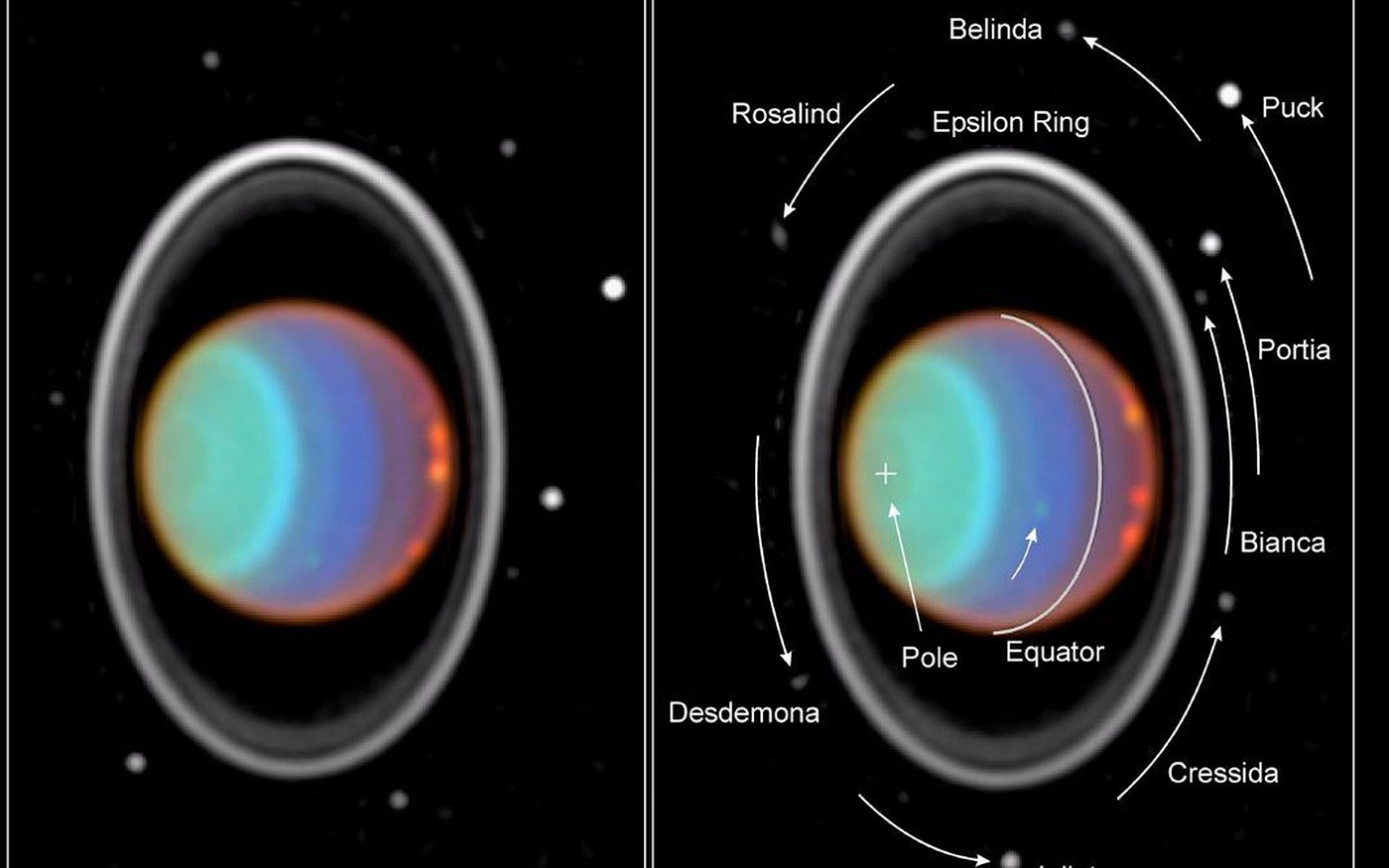Cressida

Taking its first peek at Uranus, NASA Hubble Space Telescope's Near Infrared Camera and Multi-Object Spectrometer (NICMOS) has detected six distinct clouds in images taken July 28, 1997. Hubble also captured eight moons in this image.
NASA/JPL/STScI
Discovery
Cressida was discovered on Jan. 9, 1986 in images taken by Voyager 2. It is one of the 10 Uranian satellites discovered by the Voyager science team.
Overview
Cressida is one of the small, inner moons of Uranus. Little is known about it other than its size and orbital characteristics. Based on its low albedo, its surface probably consists of the dark, unprocessed, carbon-rich material found on the C-class of asteroids.
How Cressida Got its Name
Originally called S/1986 U3, Cressida was named for the title character in William Shakespeare's play, "Troilus and Cressida."
Keep Exploring




